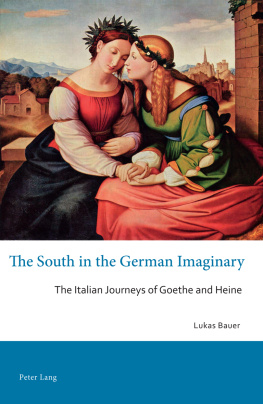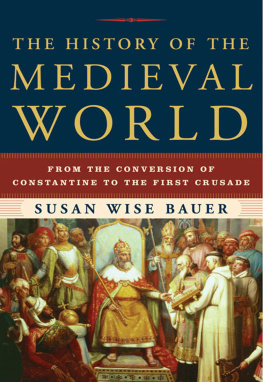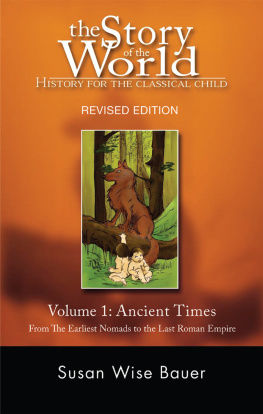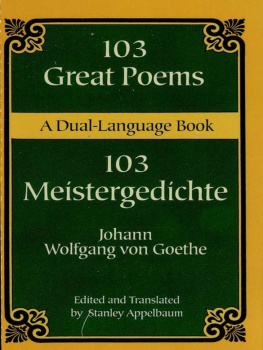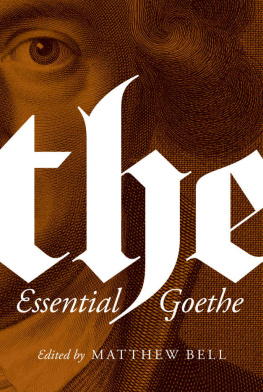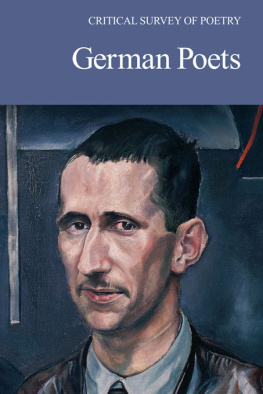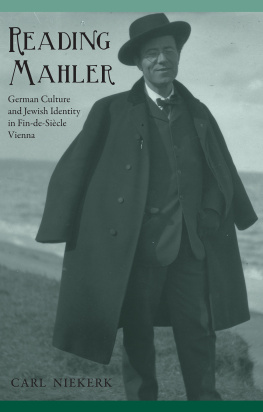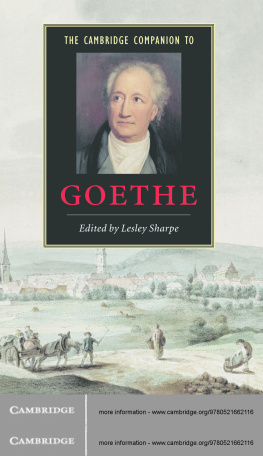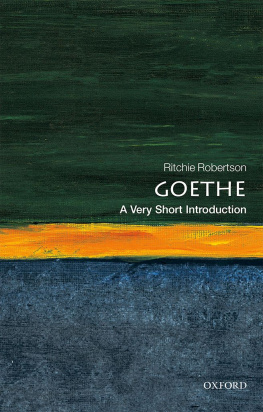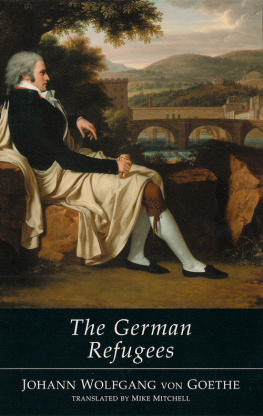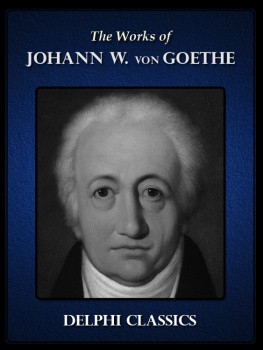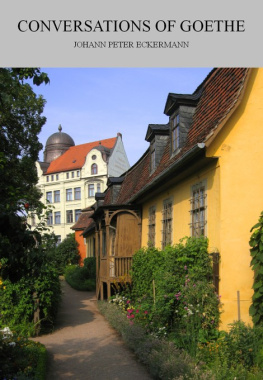Contents
Australian and New Zealand Studies in
German Language and Literature
Edited by Gerhard Schulz (University of Melbourne)
and Tim Mehigan (University of Queensland)
Vol. 21
PETER LANG
Oxford Bern Berlin Bruxelles Frankfurt am Main New York Wien
The South in the
German Imaginary
The Italian Journeys of Goethe and Heine
Lukas Bauer
PETER LANG
Oxford Bern Berlin Bruxelles Frankfurt am Main New York Wien
Bibliographic information published by Die Deutsche Nationalbibliothek.
Die Deutsche Nationalbibliothek lists this publication in the Deutsche Nationalbibliografie; detailed bibliographic data is available on the Internet at http://dnb.d-nb.de.
A catalogue record for this book is available from the British Library.
Library of Congress Control Number: 2015935702
Cover image: Italia und Germania, Frederick Overbeck (1828).
Oil on canvas.
ISSN 0171-6867
ISBN 978-3-0343-1920-1 (print)
ISBN 978-3-0353-0714-6 (eBook)
Peter Lang AG, International Academic Publishers, Bern 2015
Hochfeldstrasse 32, CH-3012 Bern, Switzerland
info@peterlang.com, www.peterlang.com, www.peterlang.net
All rights reserved.
All parts of this publication are protected by copyright.
Any utilisation outside the strict limits of the copyright law, without the permission of the publisher, is forbidden and liable to prosecution.
This applies in particular to reproductions, translations, microfilming, and storage and processing in electronic retrieval systems.
This publication has been peer reviewed.
About the author
Lukas Bauer is an Honorary Post-Doctoral Fellow at the University of Wollongong. He received his PhD in German Literature from the University of Wollongong in 2014.
About the book
The division between North and South in Europe represents a geographical as well as a cultural boundary that has influenced the way many European nations think about their history and identity. This divide is particularly prominent in the cultural dialogue between Germany and Italy and has played an important role in the construction of German identity. This study explores German representations of Italy in the early nineteenth century by examining the Italian travel writings of Johann Wolfgang von Goethe and Heinrich Heine. It analyses Goethes Italienische Reise and Heines Italian Reisebilder and focuses on the negotiation of cultural identity through representations of the NorthSouth divide.
The book compares Goethes complex attitudes towards Germany during this period with Heines wrestling with his place in German culture, as seen through their depictions of Italy. Goethe pointed to the classical heritage of Greek antiquity as the source not only of Italian, but also of German, cultural traditions and therefore as an essential element of German identity. Heine called into question Goethes experience of Italy and instead used his travels to reveal the instability of German identity and the changing nature of the European community. By investigating the travel narratives of Goethe and Heine, this study reveals the influences of historical and political change on perspectives on the South in Germany.
This eBook can be cited
This edition of the eBook can be cited. To enable this we have marked the start and end of a page. In cases where a word straddles a page break, the marker is placed inside the word at exactly the same position as in the physical book. This means that occasionally a word might be bifurcated by this marker.
| vii
First and foremost, I am deeply indebted to my principal supervisor, Professor Kerry Dunne, for her consistent dedication to my research project and her commitment that went far beyond my dissertation in guiding my academic development. Throughout my candidature, Professor Dunne has been a close mentor and a continuous source of support and encouragement.
Special thanks go to my co-supervisor Dr Karen Daly, for her support and insightful feedback on my research. Especially during the final months, Dr Daly has given me crucial help and encouragement in completing my thesis.
I would like to acknowledge the support and constructive comments of Professor Tim Mehigan. I am also grateful to Dr Heather Jamieson, who worked closely with me on refining my writing style and argument.
My appreciation also goes to the University of Wollongong for allowing me to pursue this research with the support of an Australian Postgraduate Award.
Last but not least, I would like to express my gratitude to my parents for their support and understanding during the ups and downs of thesis writing and for their valuable suggestions and proofing.
| ix
Johann Wolfgang von Goethe
Goethes Werke. Elibron Classics. Vol. 10. Boston: Adamant, 2006.
IRItalienische Reise
Smtliche Werke. Briefe, Tagebcher und Gesprche. Ed. Borchmeyer, Dieter et al. 40 vols. Frankfurt am Main: Deutscher Klassiker Verlag, 1985.
FAFrankfurter Ausgabe
Heinrich Heine
Reisebilder. Elibron Classics. Boston: Adamant 2006.
RMG Reise von Mnchen nach Genua
BLDie Bder von Lucca
SLDie Stadt von Lucca
All references to Die Nordsee, Englische Fragmente and ber Polen are also from this edition.
| 1
Italy is the recurring image of the Other in the German literary imagination and has alternately been presented by Germans as an object of derision or of desire. The geographical opposition of North and South within Europe has been an essential means of defining the German self against the alterity of Latin civilization. Two canonical works of German travel literature written in the late eighteenth and early nineteenth centuries, but published only thirteen years apart in 1816 and 1829, respectively, present distinct views on German cultural identity in the early nineteenth century. Johann Wolfgang Goethes Italienische Reise and Heinrich Heines Italian Reisebilder expose a key transitional moment in the interpretation of what it meant to be German. Goethe and Heine are concerned about deep and lasting changes in their contemporary home society, and they present alternative guiding principles for the edification of the German community. An exploration of both texts points to a transition in understanding German cultural identity that reflects broader social changes from the Kunstperiode, with its privileging of aesthetics as the key to a good society, to a more political orientation, particularly amongst left-wing German intellectuals.
Goethes experiences during his two-year journey through Italy in 178688 were built on assumptions about the significance of Italy for the German cultural imagination. Following publication of the three parts of his Italienische Reise (1816, 1817, 1829), Italys natural and cultural landscape occupied a central position in German intellectuals understanding of German history, culture and identity (Beebee, Ways of Seeing 322). The journey to the South took on the appearance of a pilgrimage for Germans to the source and centre of their own cultural tradition. Because the South became closely associated with Goethe, the journey to Italy was used as a vehicle by a later generation of writers to distance themselves from Goethes 1 | 2 influence and challenge his authority by offering alternative experiences of Italy. Among these writers, Heine, in his Italian

